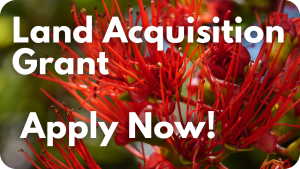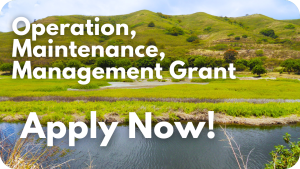How to Apply
How to Apply (UPDATED October 2, 2025)
AVAILABLE GRANTS
Please contact the program office for assistance at 808.586.0921 || [email protected]
———————————————————————————————————————————
Responses to general inquiries:
The State Legacy Land Conservation Program provides grants to State agencies, counties, and nonprofit land conservation organizations for acquiring interests in land that will be managed to provide conservation benefits.
Our volunteers that serve on the Legacy Land Conservation Commission review and rank the applications, and issue a recommendation to the State Board of Land and Natural Resources, which then approves specific grants for specific amounts of funding.
QUESTIONS ABOUT THE APPLICATION PROCESS
Q1: Is there some specific requirement that defines a nonprofit as a “land conservation” non-profit? Or is any nonprofit eligible if it will be acquiring the land for land conservation purposes?
A1: The grant application calls for a nonprofit mission statement and IRS documentation of nonprofit status, and an organization’s fulfillment of the grant eligibility requirements may be considered by the Legacy Land Conservation Commission in its application review and recommendation process. Section 13-140-2, Hawaii Administrative Rules provides a definition:
“Nonprofit land conservation organization” means an organization that protects “resource value” as defined herein or “land having value as a resource to the State” as defined under section 173A-2, HRS, as part of its activities or mission and has been determined and designated to be a nonprofit organization by the Internal Revenue Service.
“Resource value” means watershed, coastal area, beach, ocean access, habitat, cultural site, historic site, recreational, public hunting, park, natural area, agricultural production, open space, and scenic characteristics or benefits.
Q2: … curious how other organizations go about securing the land … is it typically land that they hold long-term leases with under a private landowner, and the grant fund “buys out” the private landowner? Or are they acquiring lands that are on the real estate market? What about acquiring State lands? Is that ever done under this program?
A2: Landowner buyout by a lessee isn’t a typical scenario but it’s possible, as long as the buyer is an eligible applicant. Acquiring land listed on the open market is a common scenario, however the applicant or a partnering land trust may have established seller connections/commitments to complete a conservation transaction rather than an open market transaction. In some cases an insider deal or a fat cash offer has derailed the planned conservation transaction.
If a State agency is authorized to sell its land, and that agency is a willing seller, then perhaps State land could be acquired by an eligible buyer with a grant from the Land Conservation Fund. Even if legally possible, this kind of transaction would be more difficult to complete than purchasing land from a private seller. Before starting the application process, contact the State agency that holds management authority over the property..
Q3: . . . noticed there are options on the application to include more than one parcel. Do these properties need to be contiguous? Or can I apply to acquire one parcel in location X and another one in location Y with the same intent to conserve/reforest/restore, etc.?
A3: The properties don’t need to be contiguous. If a single seller owns all the properties, that would be less complex and easier to process, administratively and contractually, than multiple properties under different ownership. Applicant decides on application strategy, we don’t advise on that, a single application or multiple applications is up to you. The Legacy Land Conservation Commission reviews and ranks each application separately, although relationships between different applications may influence the outcome of that process.
—————————————————————————————————————-
Steps in the grant application/funding cycle:
- Register each application separately.
- After receiving access to application folders, study the Application Instructions
- Complete and submit the Agency Consultation Form, including Maps and Photos of the property
- Complete and submit the Full Application Form, including Agency Consultation Form, Form 1 through Form 8, and Additional Documents.
- Attend the Legacy Land Conservation Commission (LLCC) Organizational Meeting to see how the LLCC establishes Permitted Interaction Groups for investigating the grant applications, including Field Visits (optional).
- Consult with the LLCC Group assigned to the application, and with staff from the Legacy Land Conservation (LLCP) staff.
- Submit Final Application, including Supplemental Materials arising from consultations with LLCC Group and LLCP staff.
- Attend LLCC public meetings for:
(a) Reporting by LLCC Permitted Interaction Groups, and
(b) Review, Ranking, and LLCC Recommendations for grant applications, including a brief presentation to the LLCC by each applicant.
———————————————————————-——————————————–
9. The Department of Land and Natural Resources consults with legislative leadership about the LLCC recommendations.
- The Board of Land and Natural Resources (BLNR) approves some or all of the grant awards that the LLCC recommended for funding.
- The Governor approves some or all of the grant awards that BLNR approved.
- LLCP encumbers funds for approved grant awards and executes contracts with counties and nonprofit land conservation organization.
- Grant funds are available for expenditure after all transactional due diligence is reviewed, accepted, and approved (see Due Diligence Checklist on LLCP Forms webpage).

